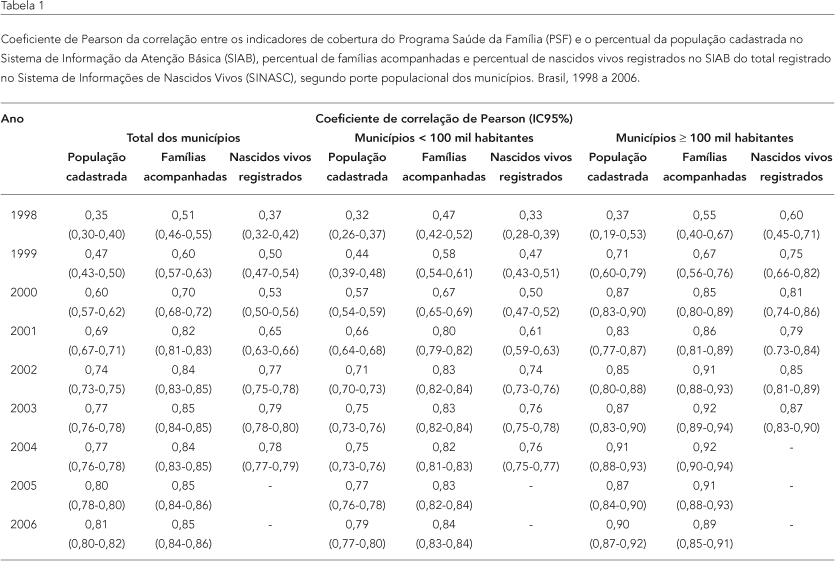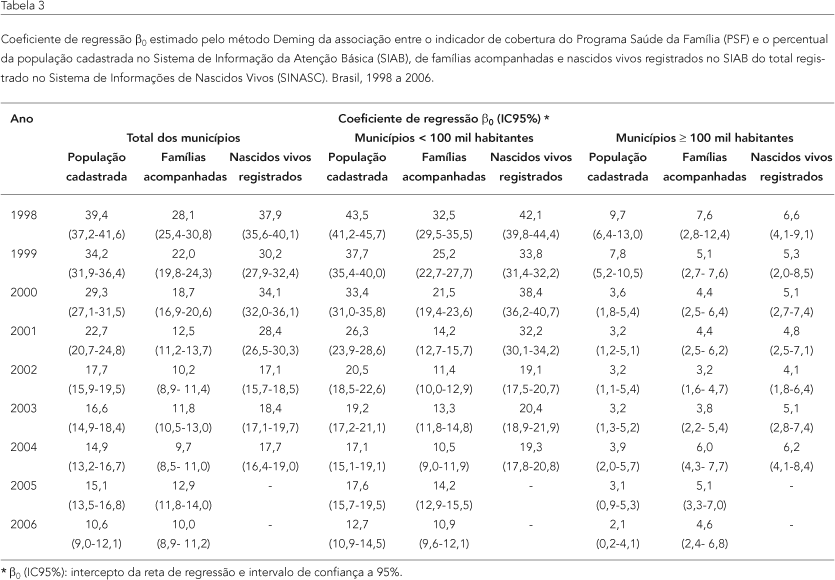This study aimed to evaluate the adequacy of the Family Health Program's (FHP) coverage indicator, calculated by using the estimated number of people served by the FHP team, obtained from a national standard. The study included all the Brazilian counties (municipalities) that adopted the FHP strategy from 1998 to 2006. The analytical methods were Pearson's correlation, Lin's concordance correlation coefficient, and the Deming regression model. The results showed that at the beginning of the observation period, the coverage indicator did not express the size of the program's population of beneficiaries, when comparing the enrolled population, the number of families under follow-up, and the number of live births recorded. Gradually, and especially beginning in 2000, the indicator began to represent a good estimate of FHP coverage, although the trend differed according to the size of the municipalities (it was more evident among the larger municipalities). The study emphasizes the importance of defining coverage of actions and services in order to orient health program implementation.
Family Health Program; Health Services Coverage; Program Evaluation





